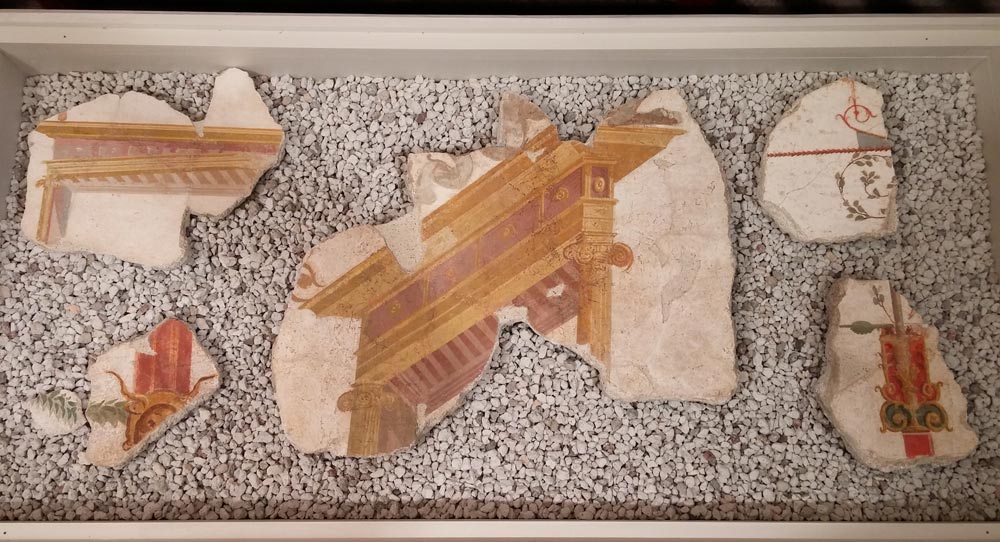Second and Fourth Style Fragments with Animals

Third Style Architectural Motifs (15–1 BC)

Fourth Style Architectural Motifs (AD 45-79)

Styles of Wall Painting

Fragments of wall painting
In Pompeii and the surrounding area, the paintings that decorate the interior walls of houses, villas, and other buildings are categorized into four styles. The First Pompeian Style, which dates to the second and early first centuries BC, mimics stone blocks with molded stucco and does not appear at Villa A or Oplontis B. The Second Style came into fashion in the first half of the first century BC. It depicts elaborate, large-scale architecture, luxury objects, and sometimes almost life-size human and mythological figures. Third Style paintings began to appear during the reign of the emperor Augustus near the end of the first century BC. These paintings consist of flat colored fields, often with panels portraying scenes of mythological figures and landscapes centered within them, and intricate details in borders. The Fourth Style, which arose during the first half of the first century AD and remained popular until the eruption of Mount Vesuvius, is perhaps the most difficult to define. It contains architectural elements reminiscent of the Second Style and other details that carried over from the Third.
The fragments shown here illustrate a variety of decorative styles and motifs found in Villa A. Some fragments date to the time of the original villa, around 50 BC, while others belong to the Augustan-period renovation of about AD 1–15; still others date to the construction of the east wing in the time of Nero, around AD 55.
Fragments with Patterns and Figures (AD 45-79)



